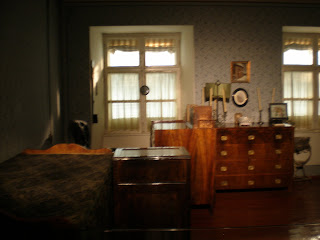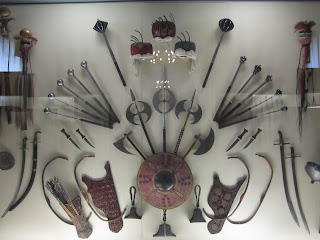Friday, August 20
After class today, Diane and I ventured to the Jewish Museum. After a quick introduction on the first floor various Jewish holidays and artifacts connected with these events, we headed to the second floor. The second floor gave an extensive history of Jews in all parts of the Habsburg Empire and all over Europe. It was incredibly informative and organized.
The most interesting thing I learned was of the acceptance of the Ottoman empire to the Jewish refugees of Europe. Also that they were so many German speaking Jews in the 20th century because the German lands were some of the only in Europe that had not expelled the Jews. This allowed Hitler’s genocide to be so devastating because of the high concentration of Jews. They were expelled and then they were massacred.
After dinner a settled in to watch The Third Man. It is an American movie filmed in Vienna right after the end of World War II. In this way it is really significant as it shows a lot of footage of bombed out Vienna after the war. It also touches on many problems that Vienna endured after the war. One example was that Vienna was divided like Berlin into four districts each governed by one of the victorious powers--America, Great Britain, France, and the USSR. There was also an international zone in which all four nations policed together. Each patrol car had four soldiers, one from each of the powers. Fortunately, Vienna was successfully reunited in 1955.
Another issue addressed in the film was the black market that emerged during the post war economy. Privateers arose out of the ashes of war to take hold of the market in order to make a fast profit in the starving economy. In the film, the privateers were trying to make a quick profit by watering down stolen penicillin from military hospitals and then reselling it to the same hospitals with devastating consequences. The medication would fail and the patients suffered devastating consequences.
A third issue the film discussed was that trying to escape from the ever growing communist regime to the east. The female lead Anna originally came from Czechoslovakia and new that without forged papers stating that she was Austrian, the Russians would claim her and she would have to return.
I really enjoyed the film, because it combined historical aspects into a mystery, thriller, love story drama.
 This trip was full of first experiences for me. It was my first time to Europe, my fist time living in a city, my first operetta, my fist time to a monastery, my first time attending Mass...so many wonderful and unique experiences. It was also the first time away from Raleigh, my adorable Labrador.
This trip was full of first experiences for me. It was my first time to Europe, my fist time living in a city, my first operetta, my fist time to a monastery, my first time attending Mass...so many wonderful and unique experiences. It was also the first time away from Raleigh, my adorable Labrador.


































